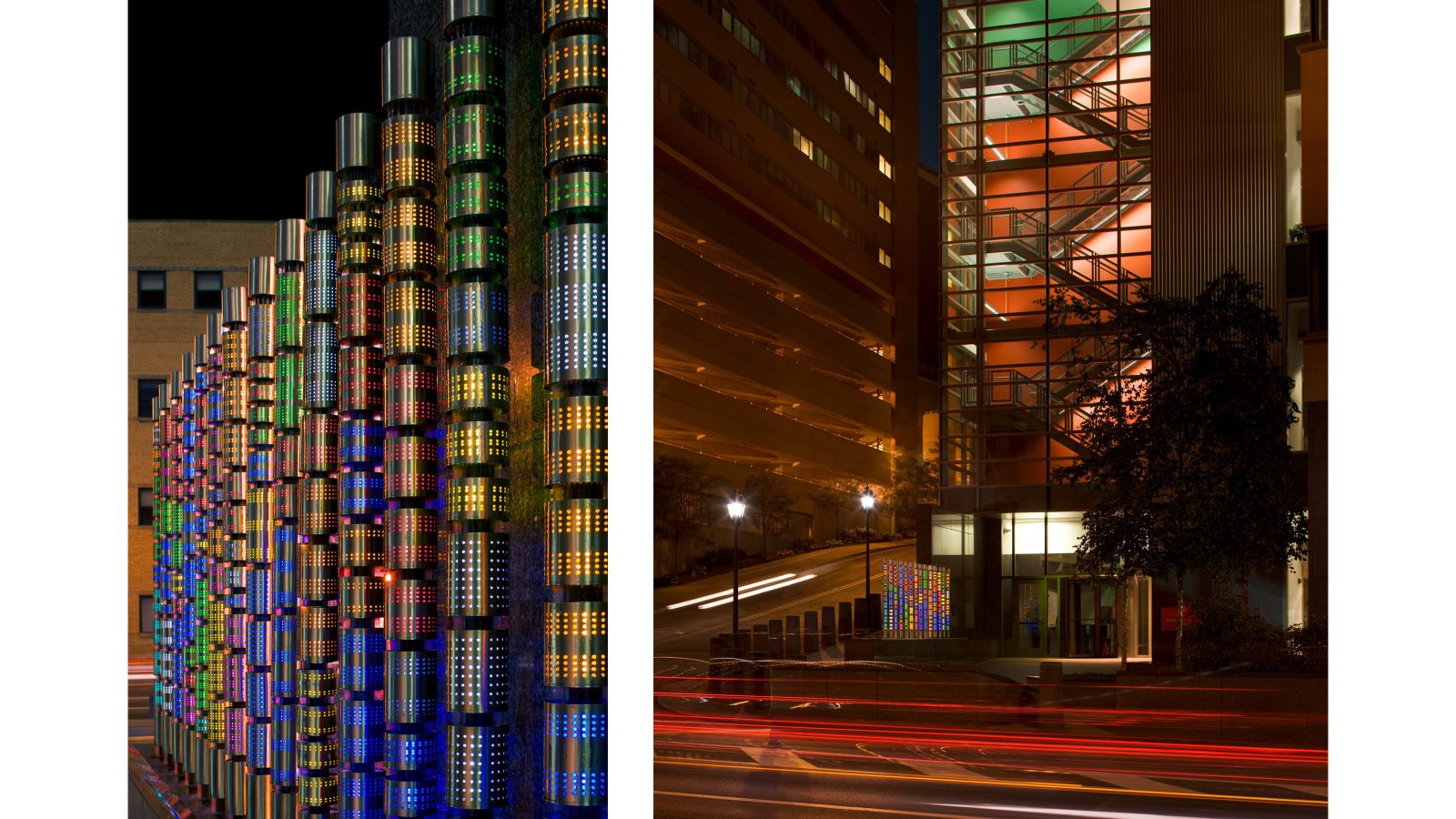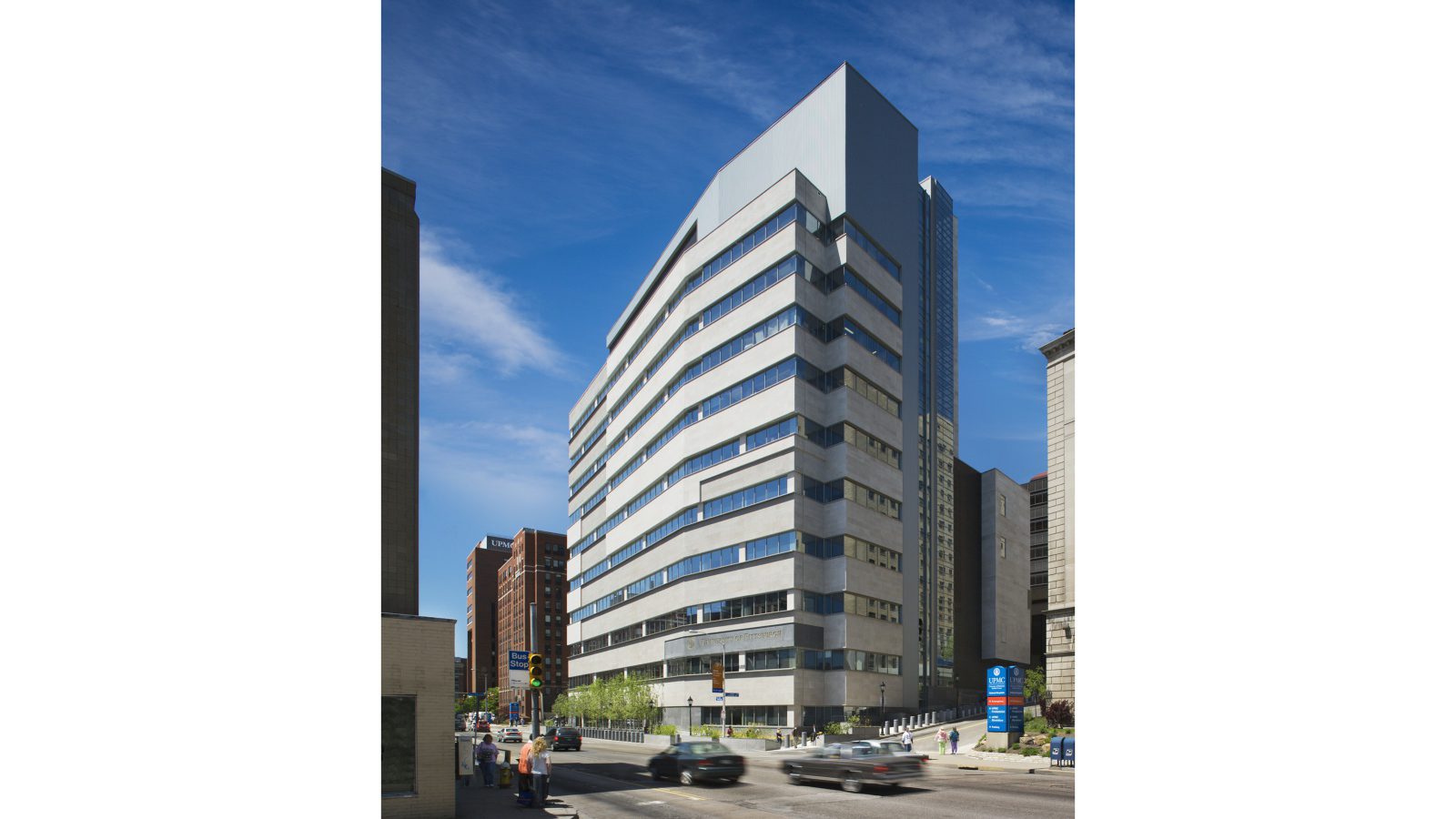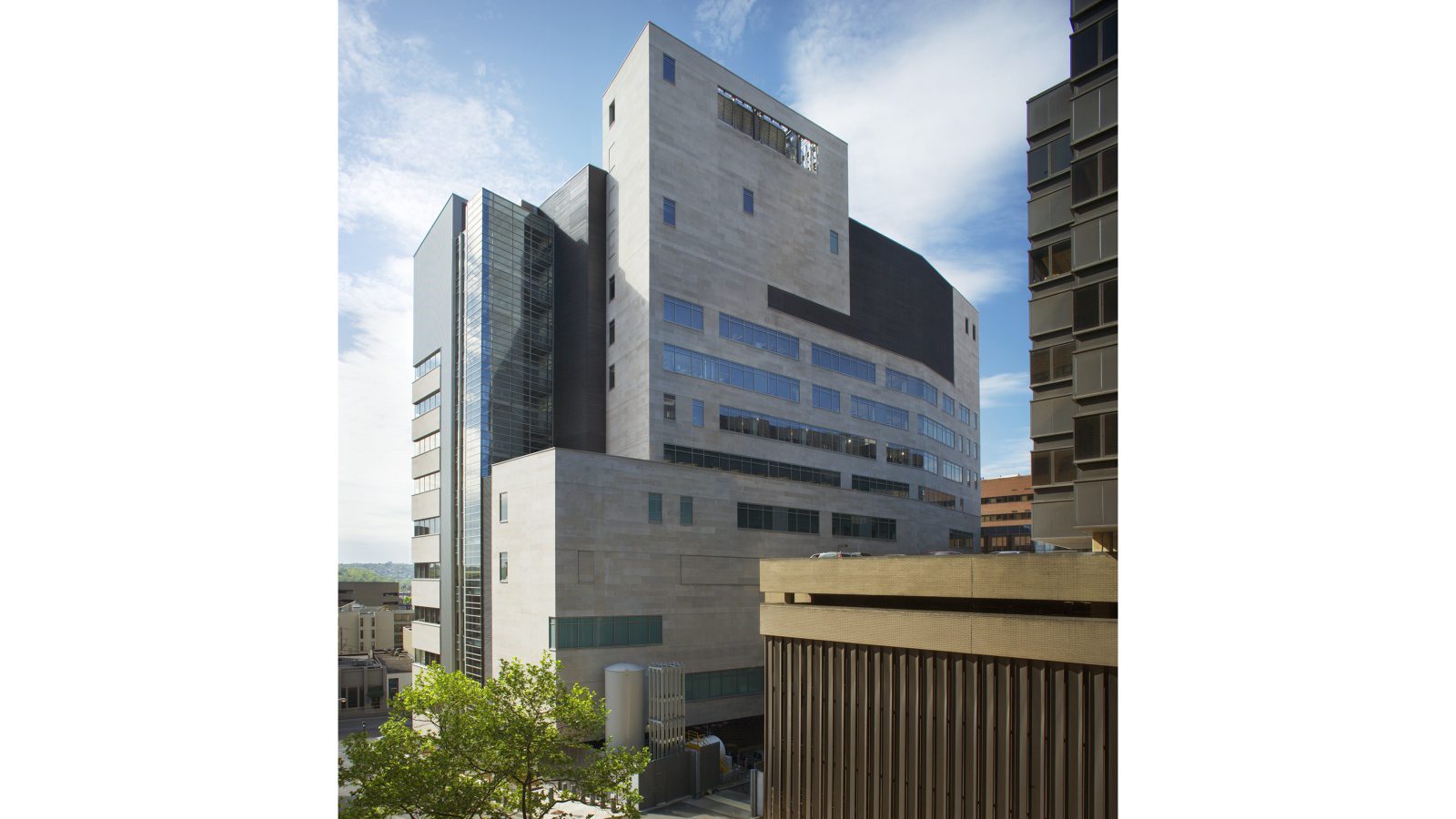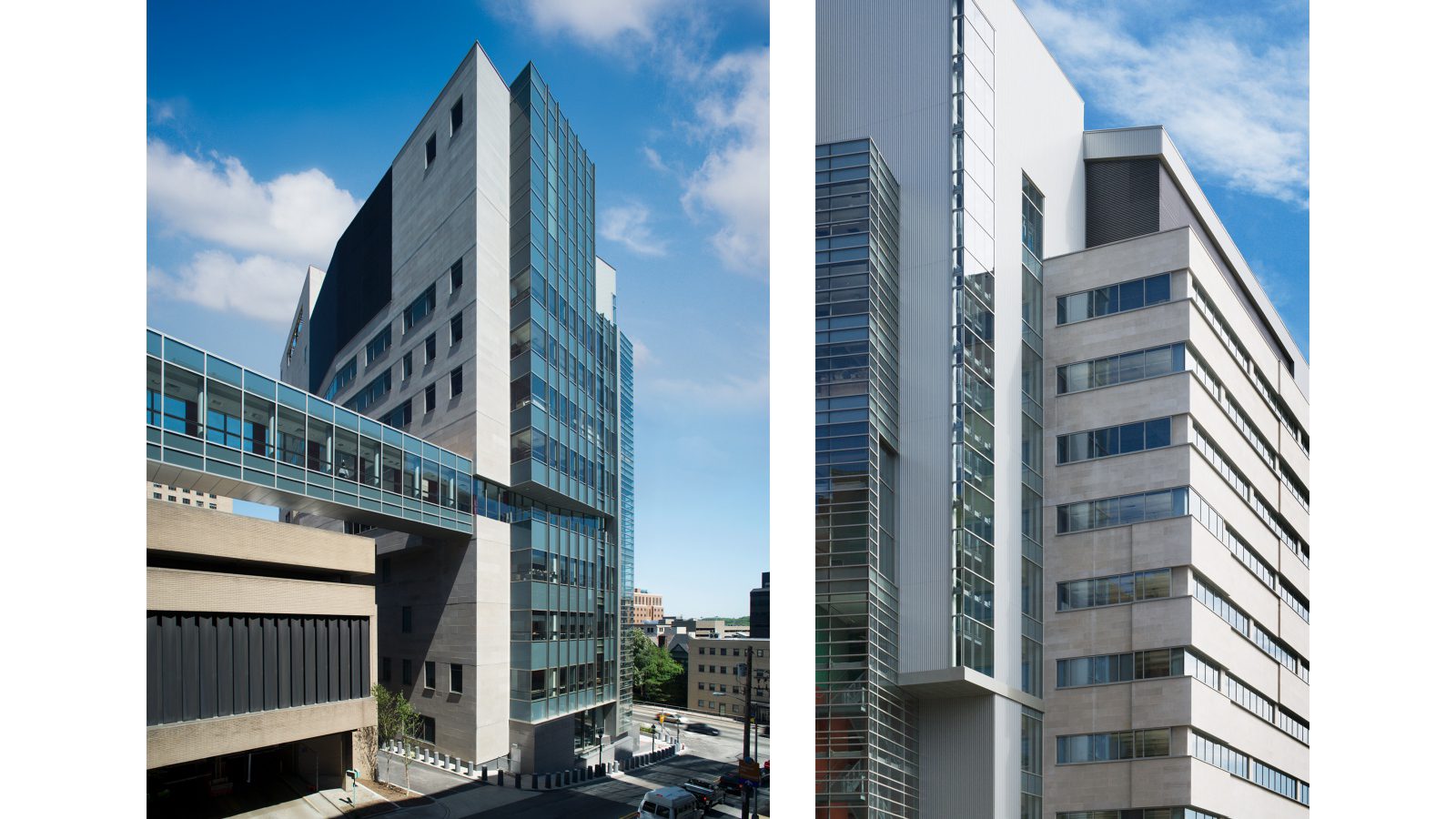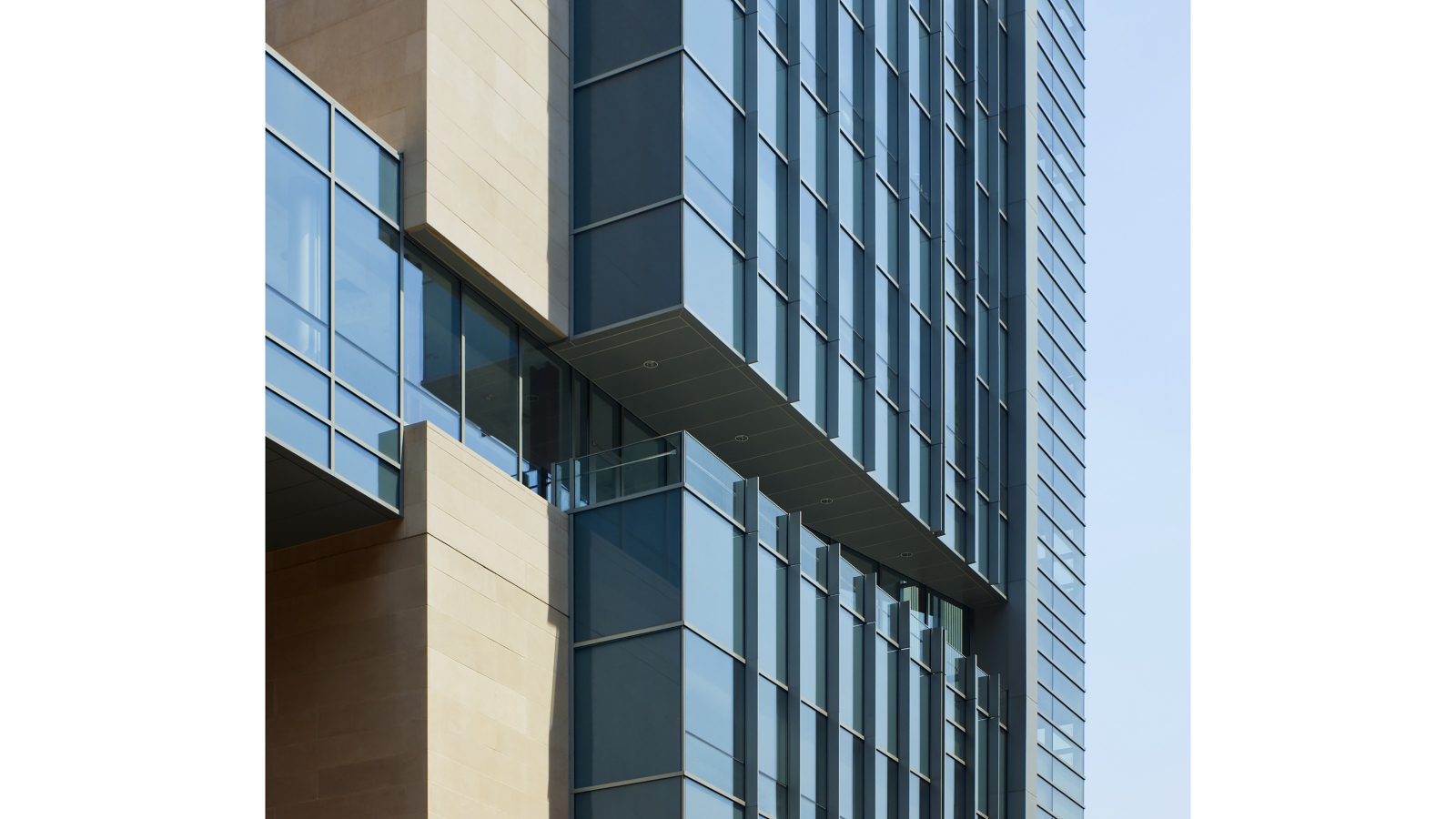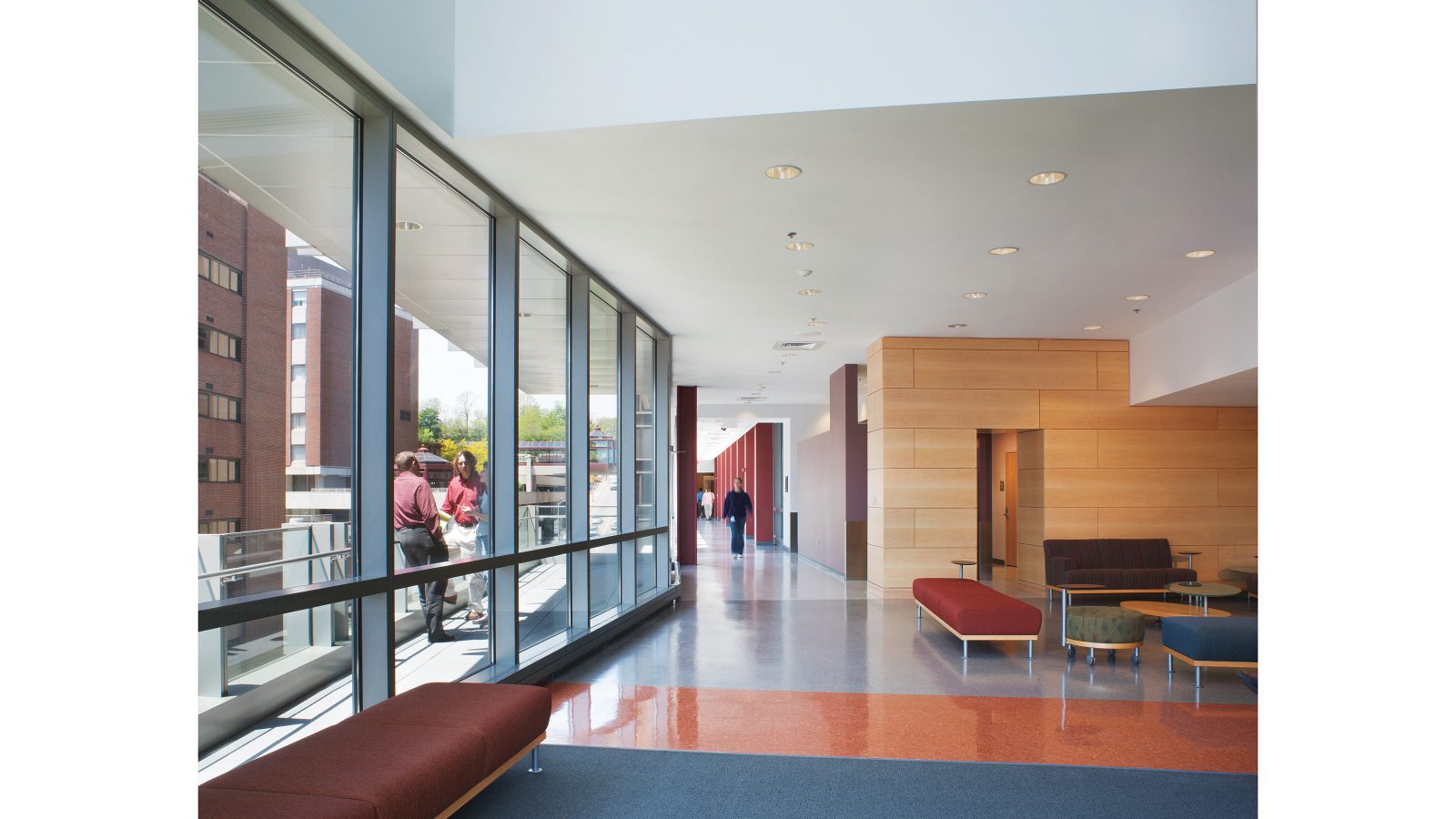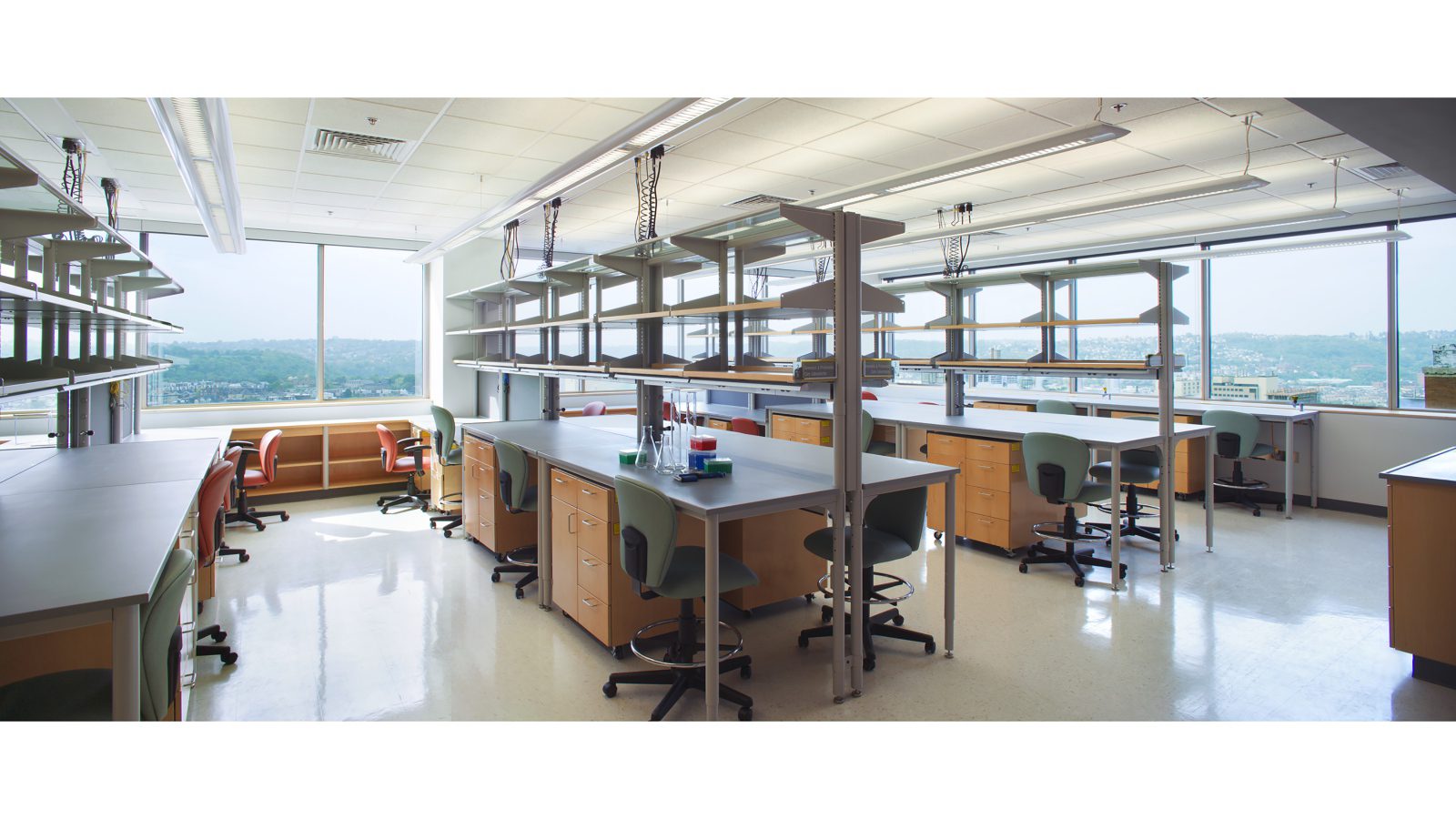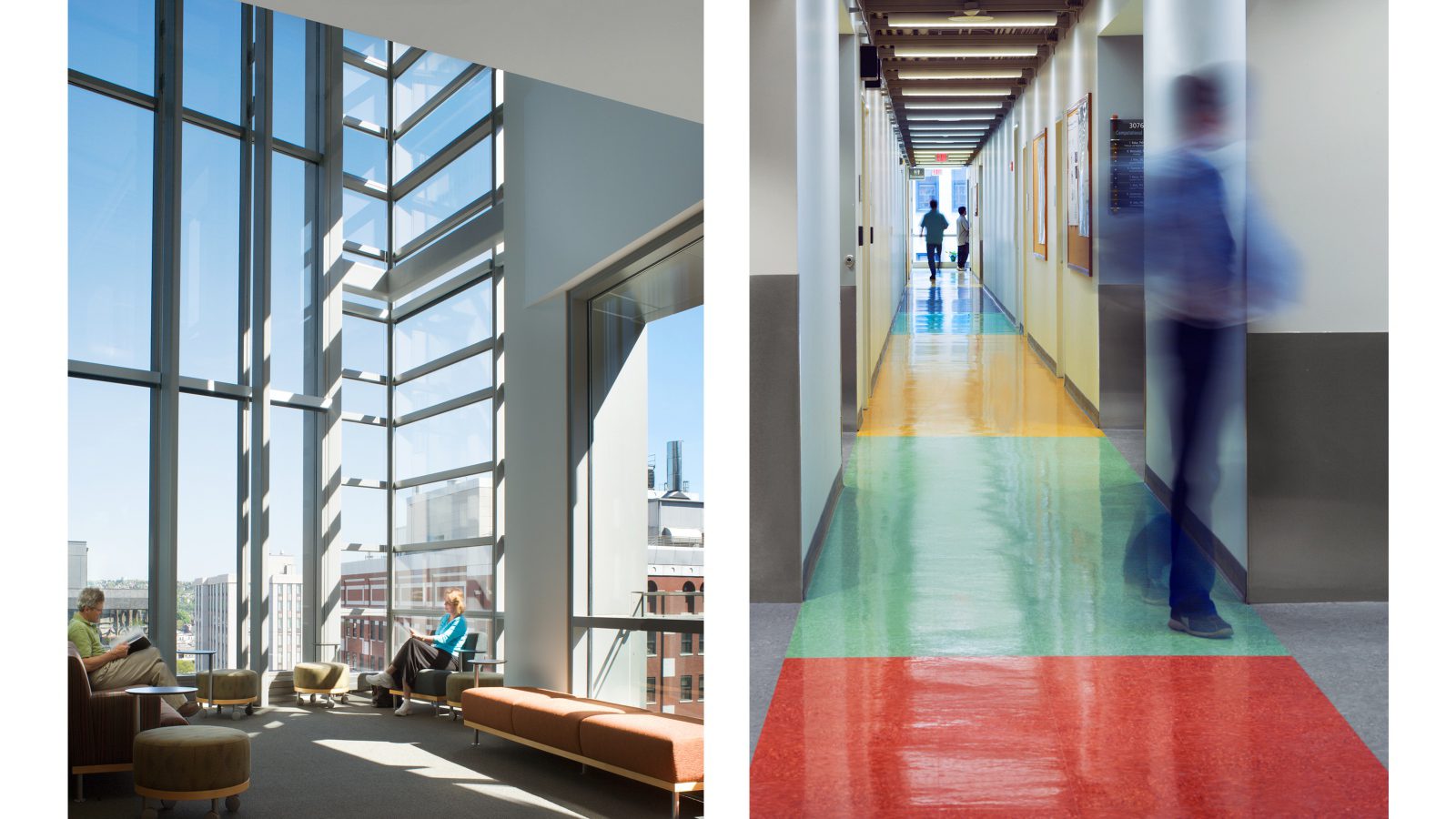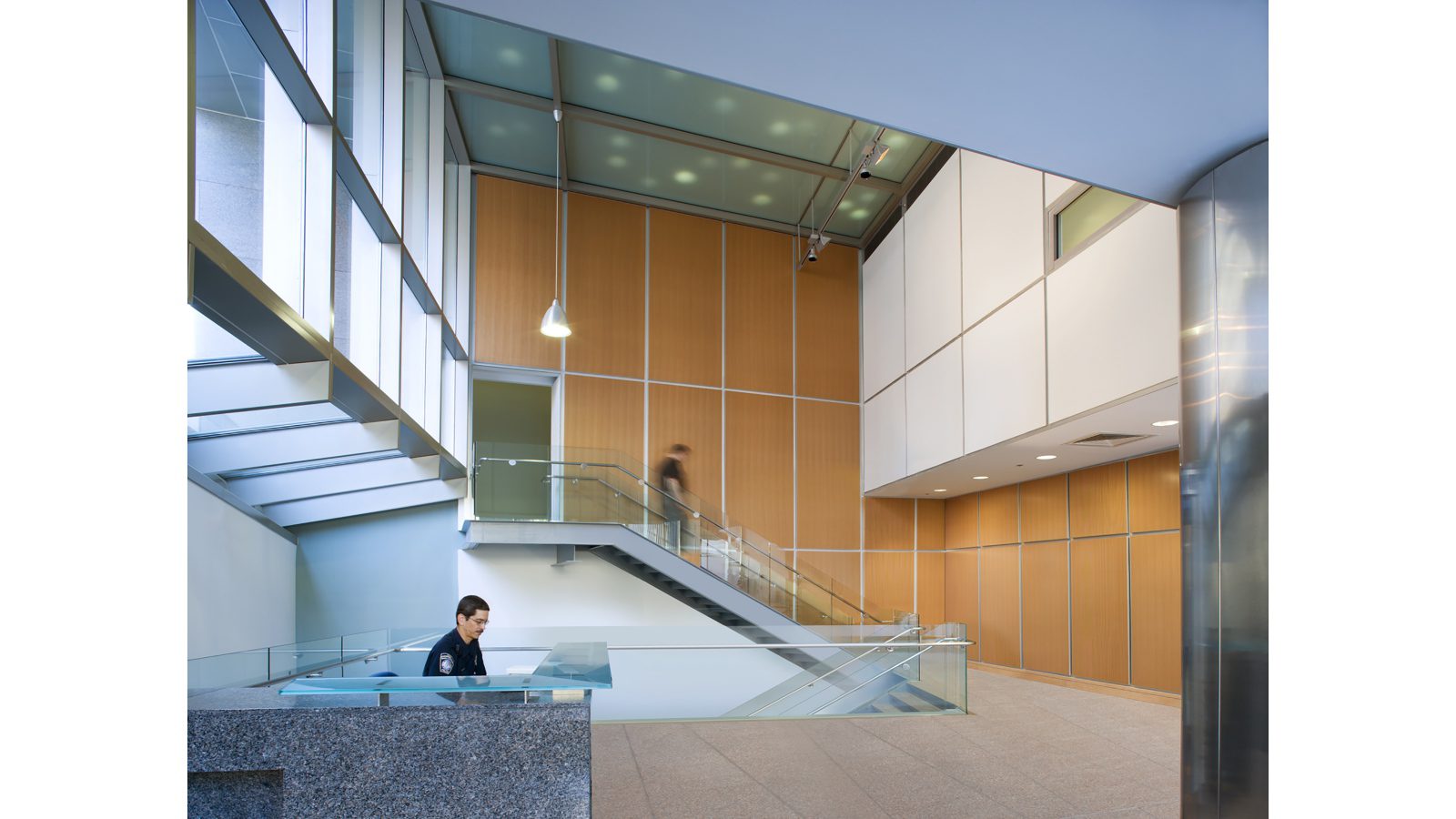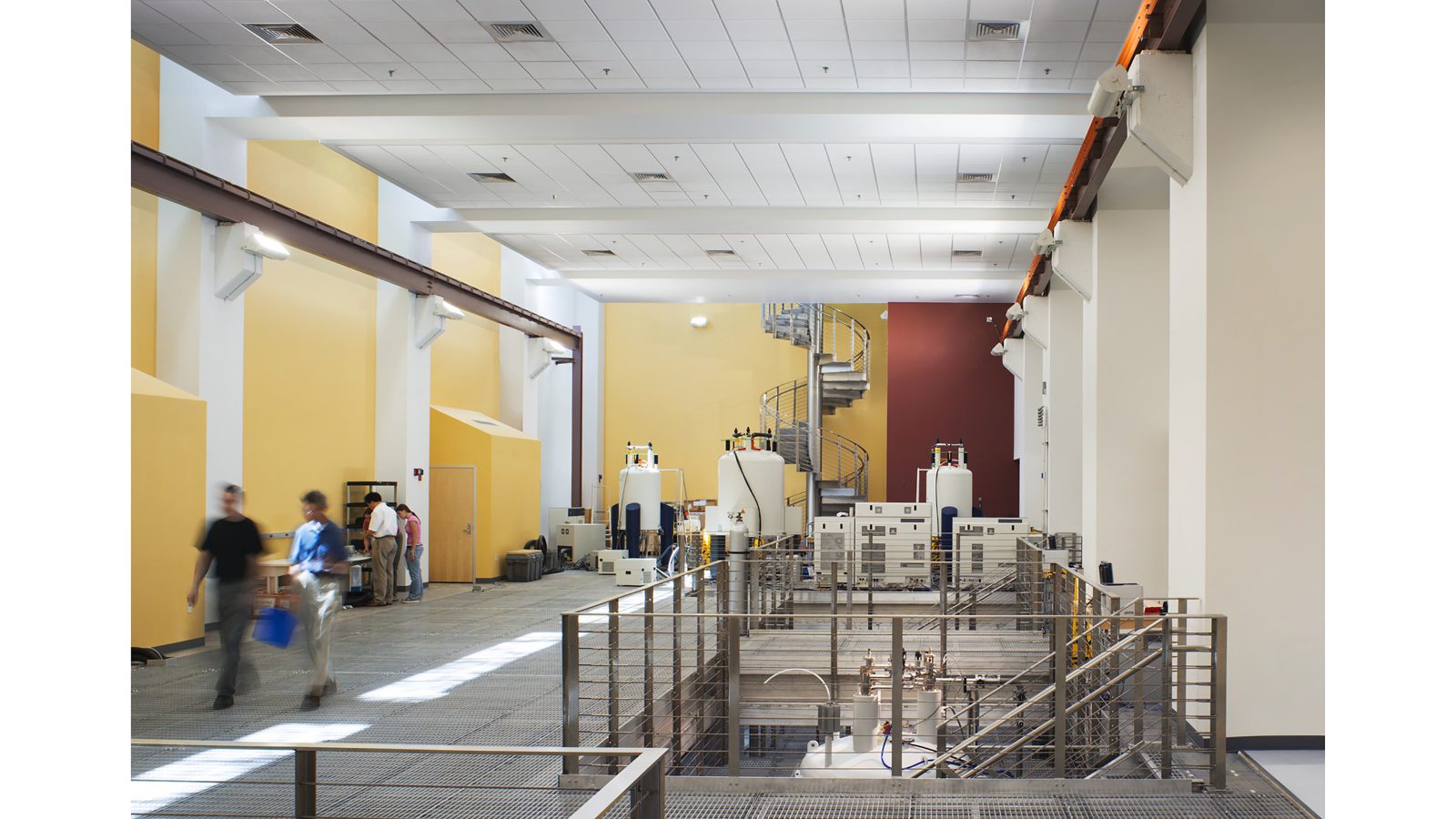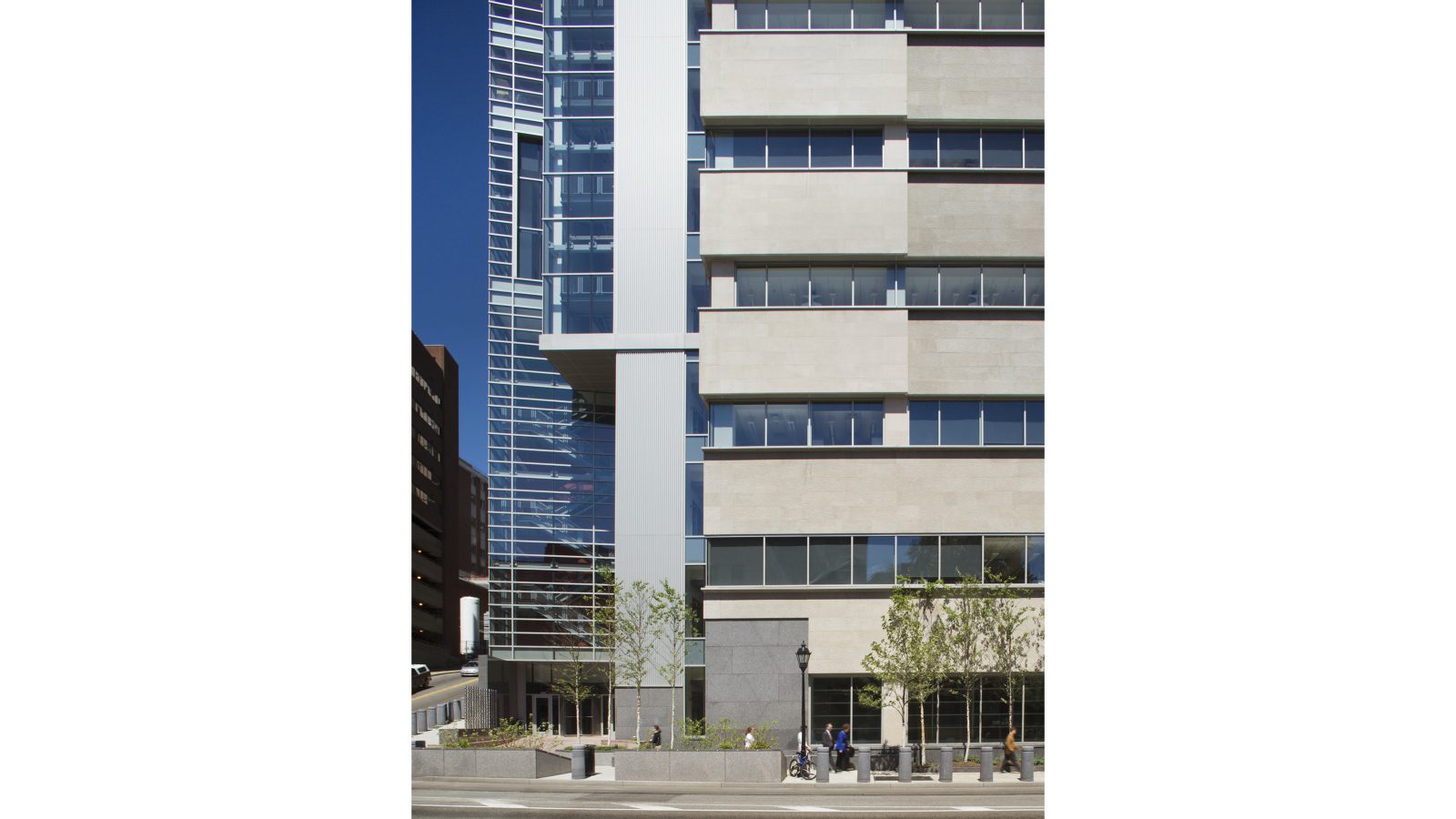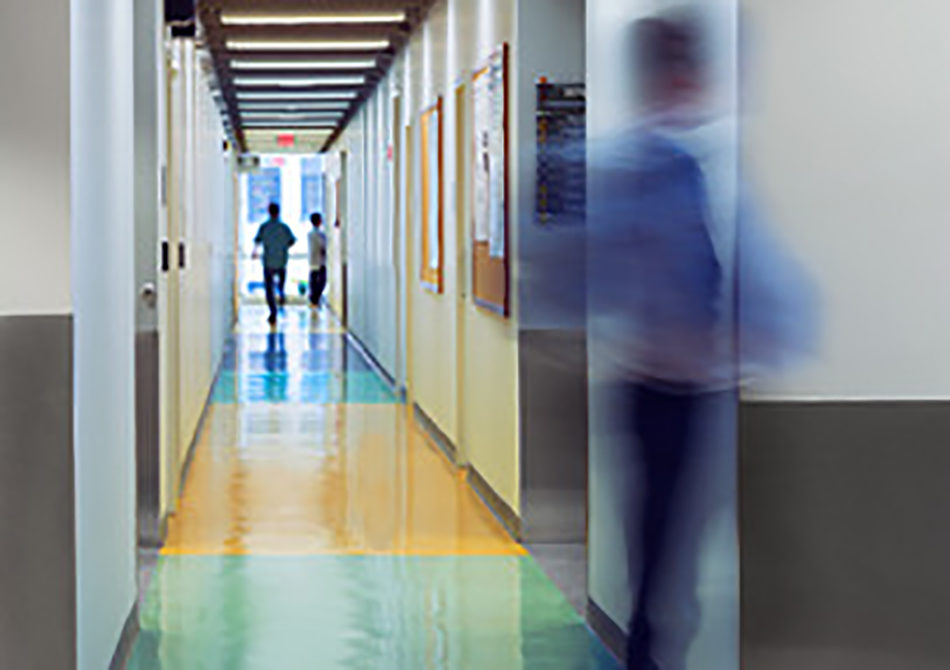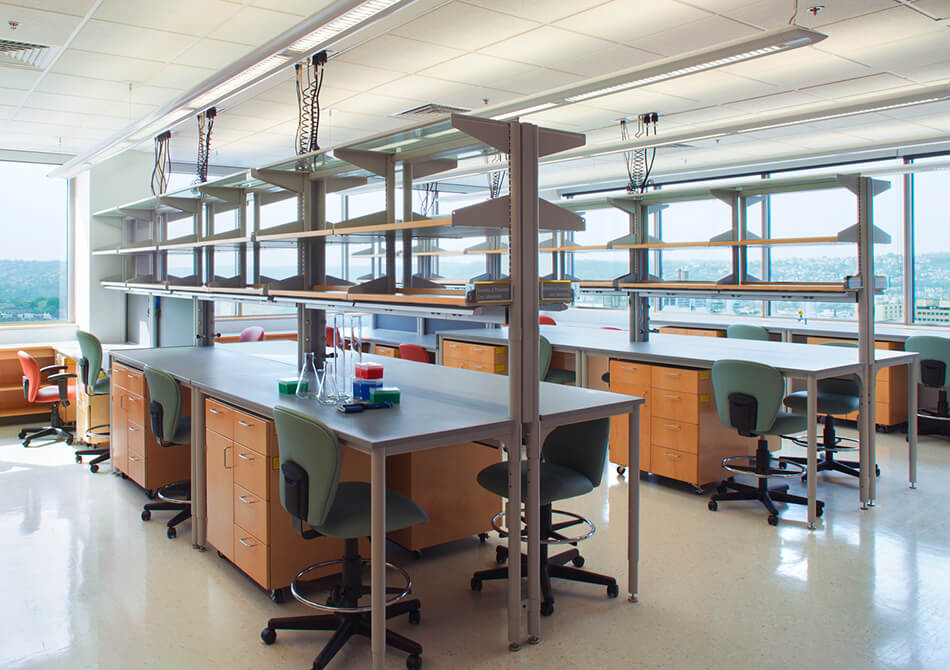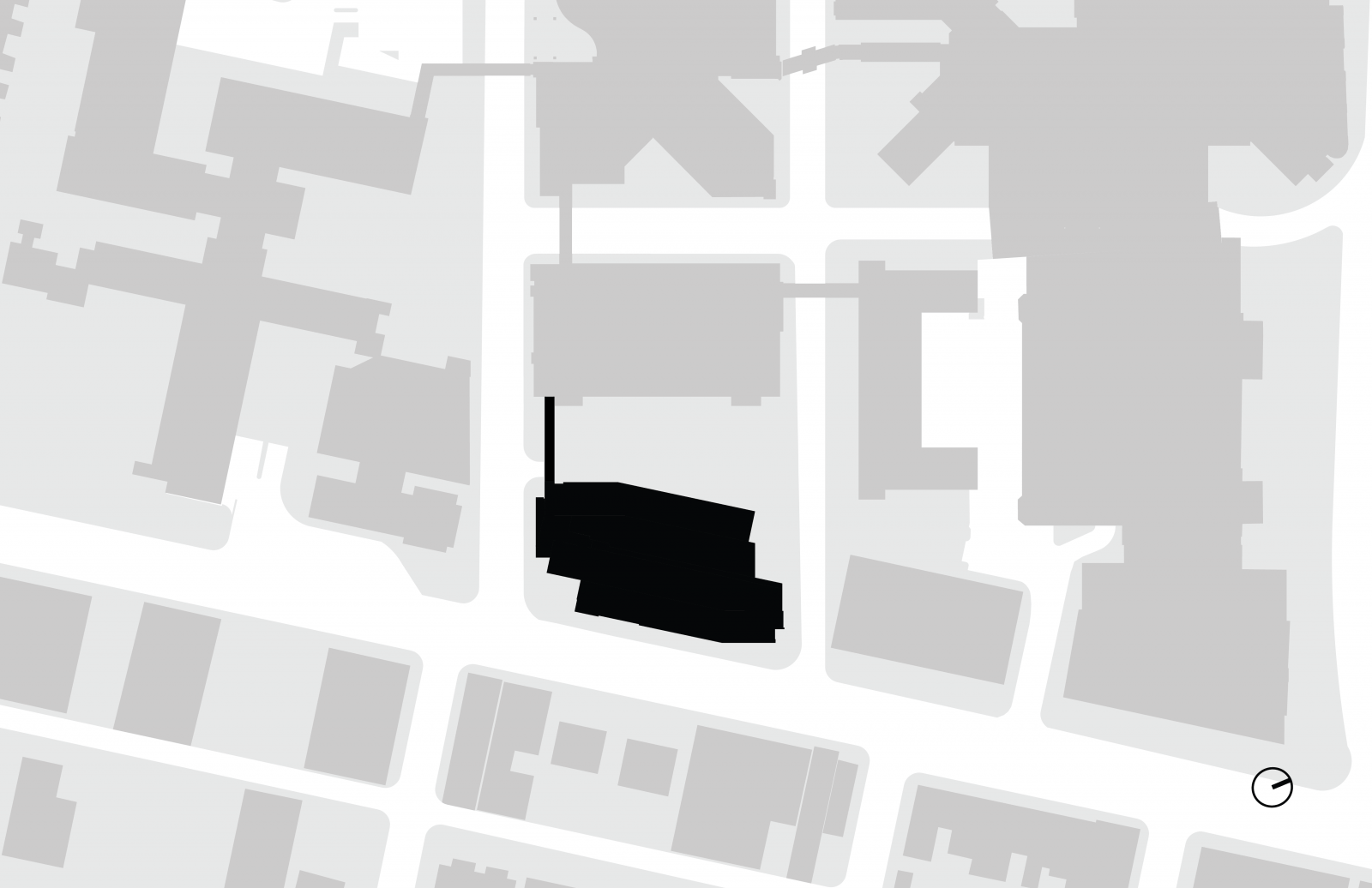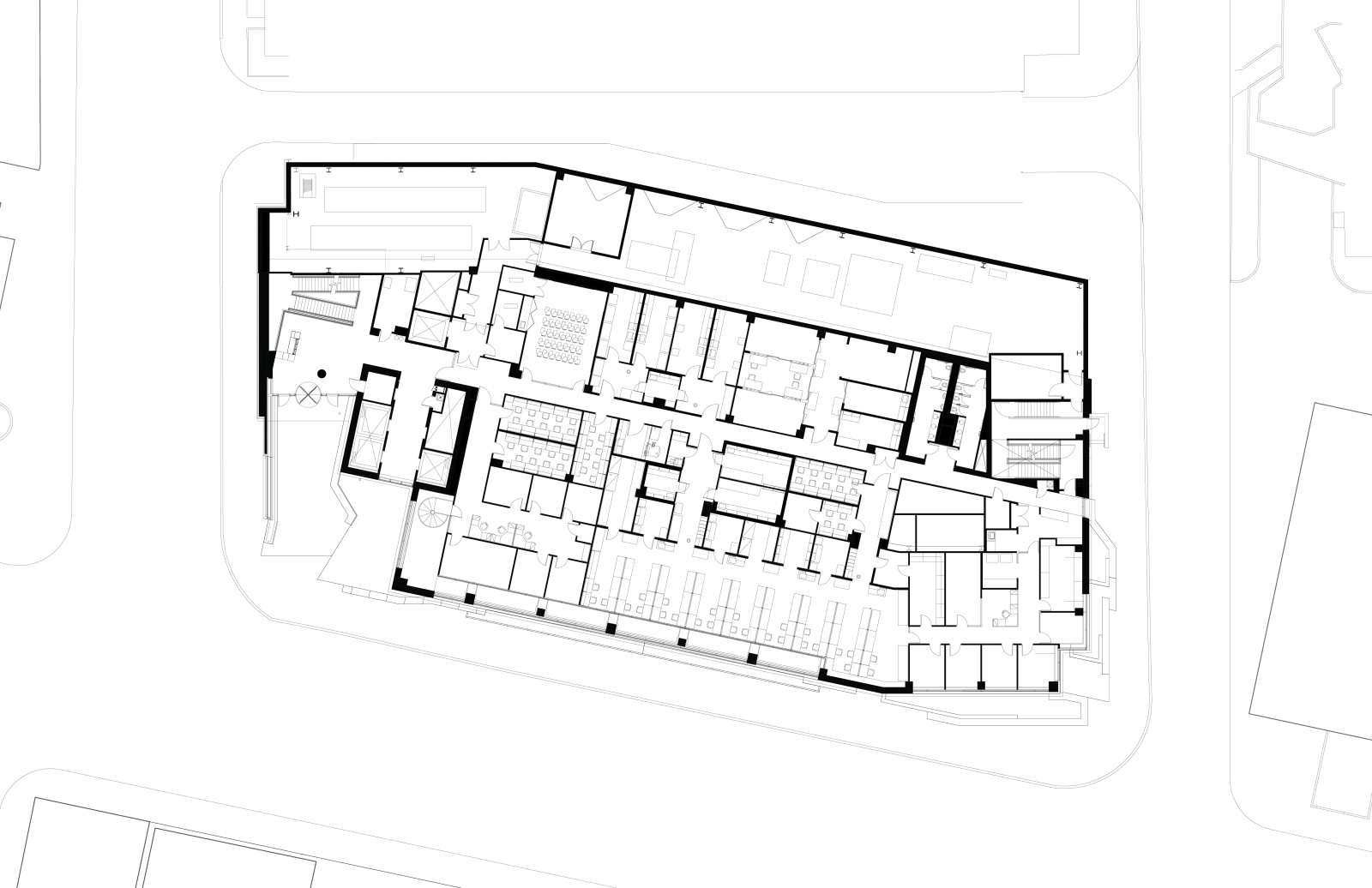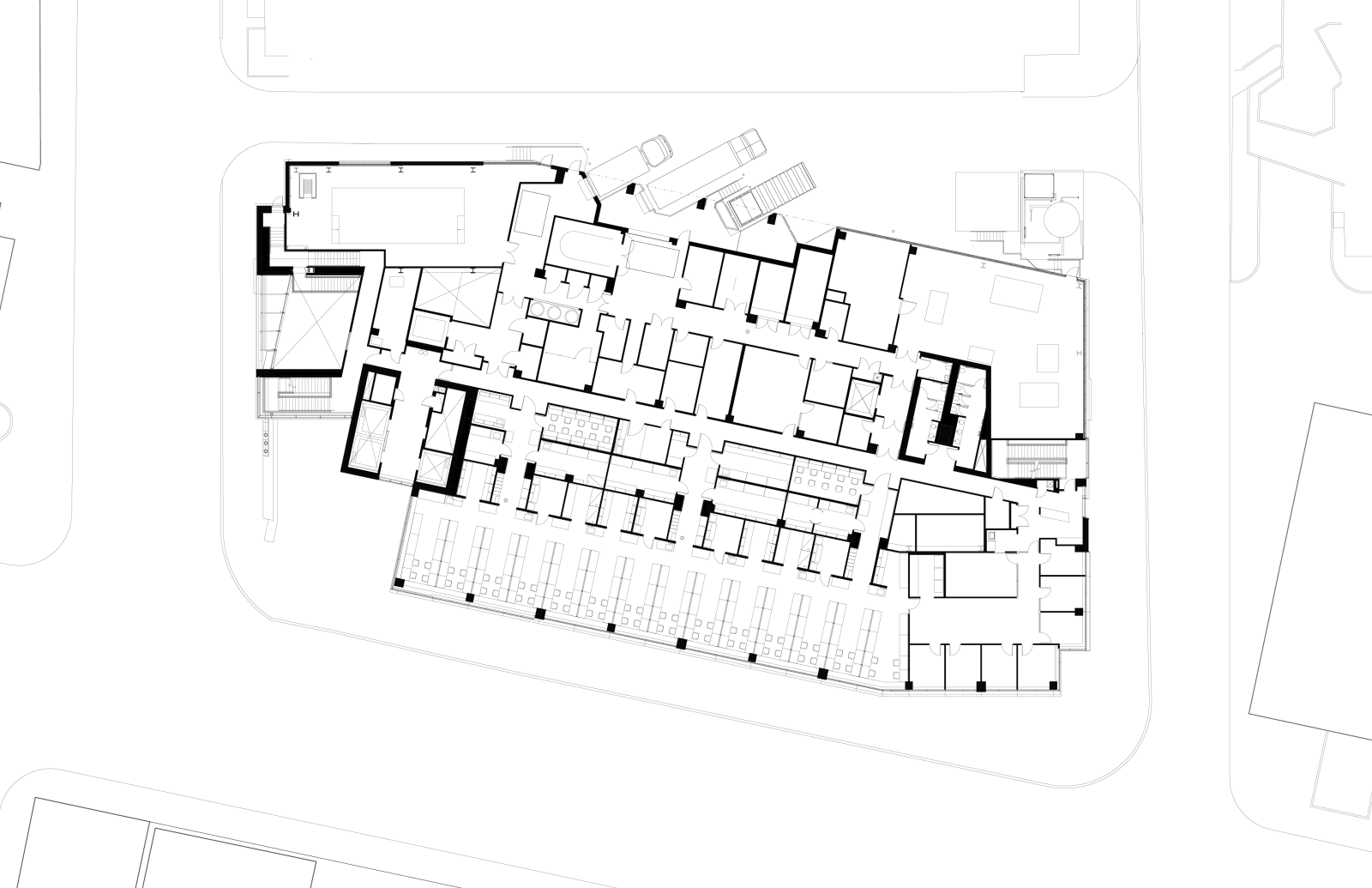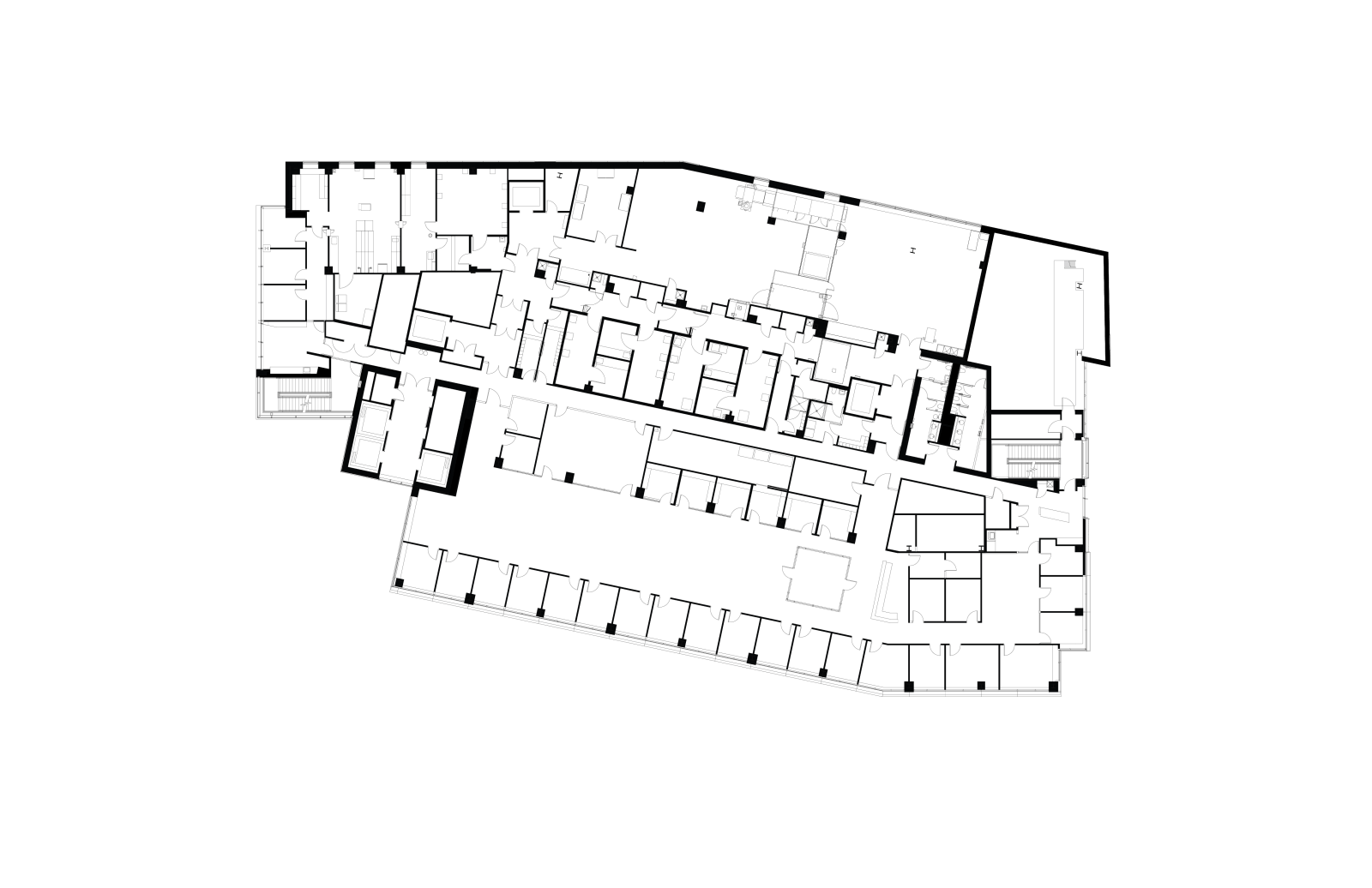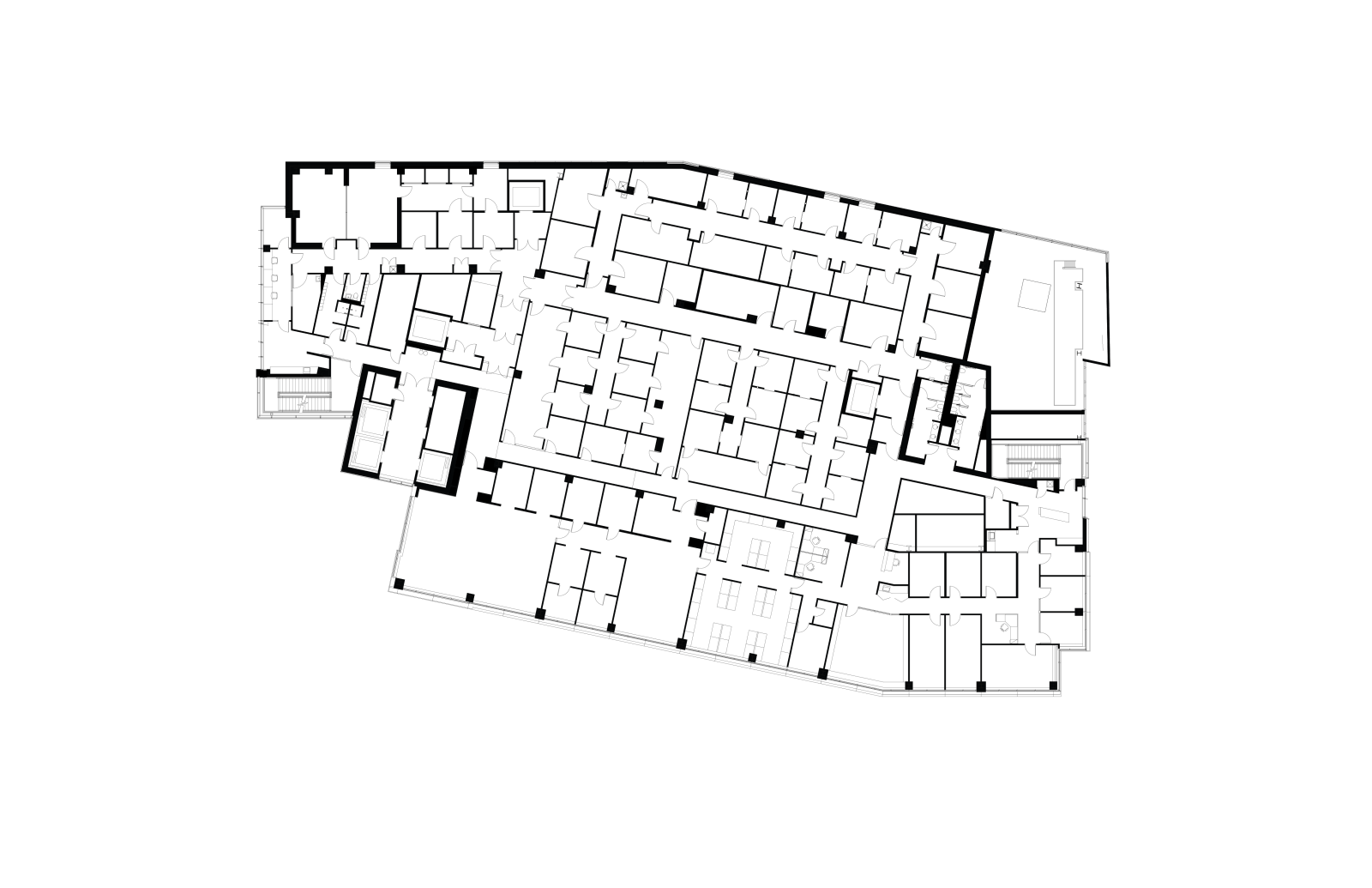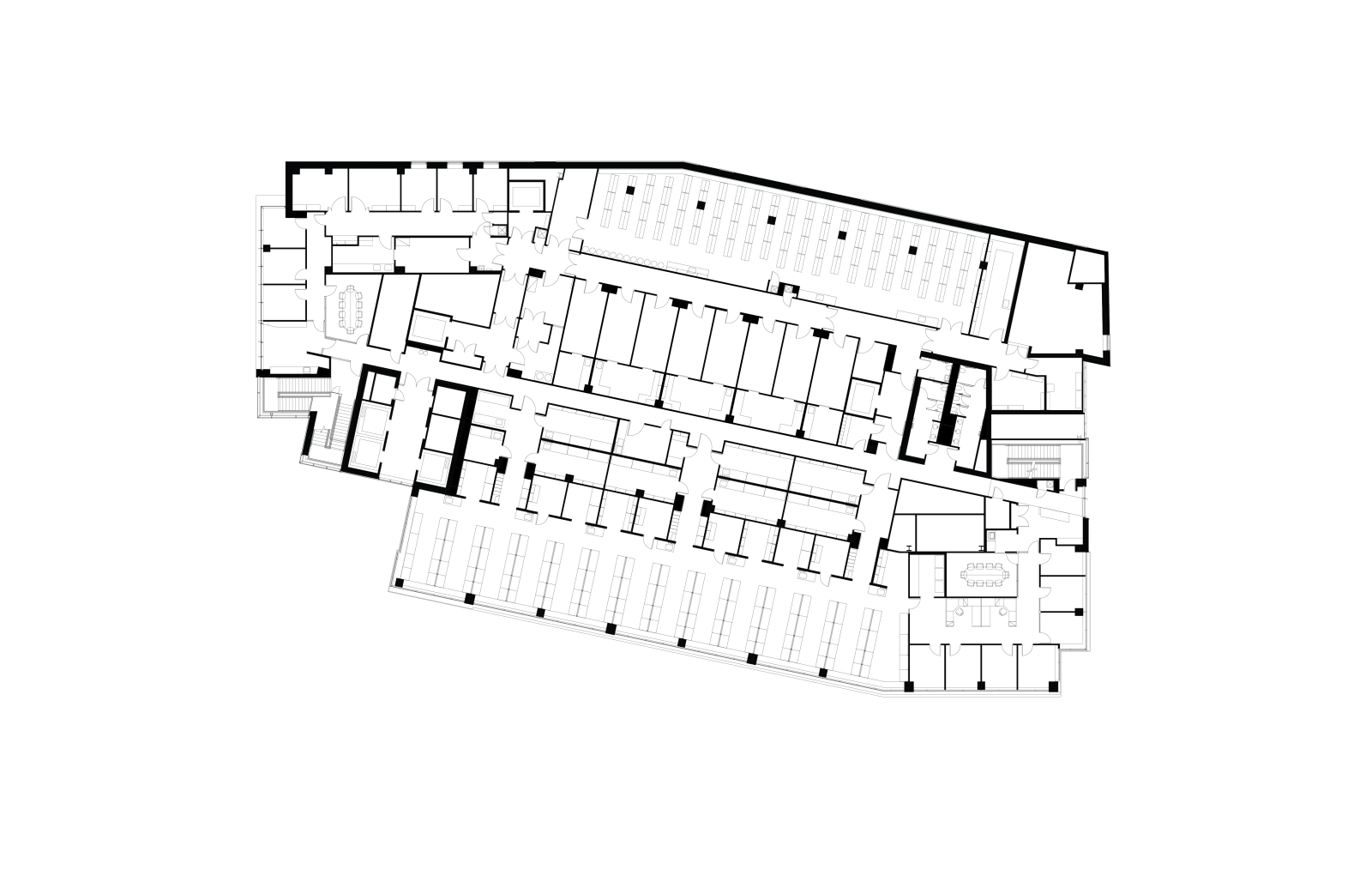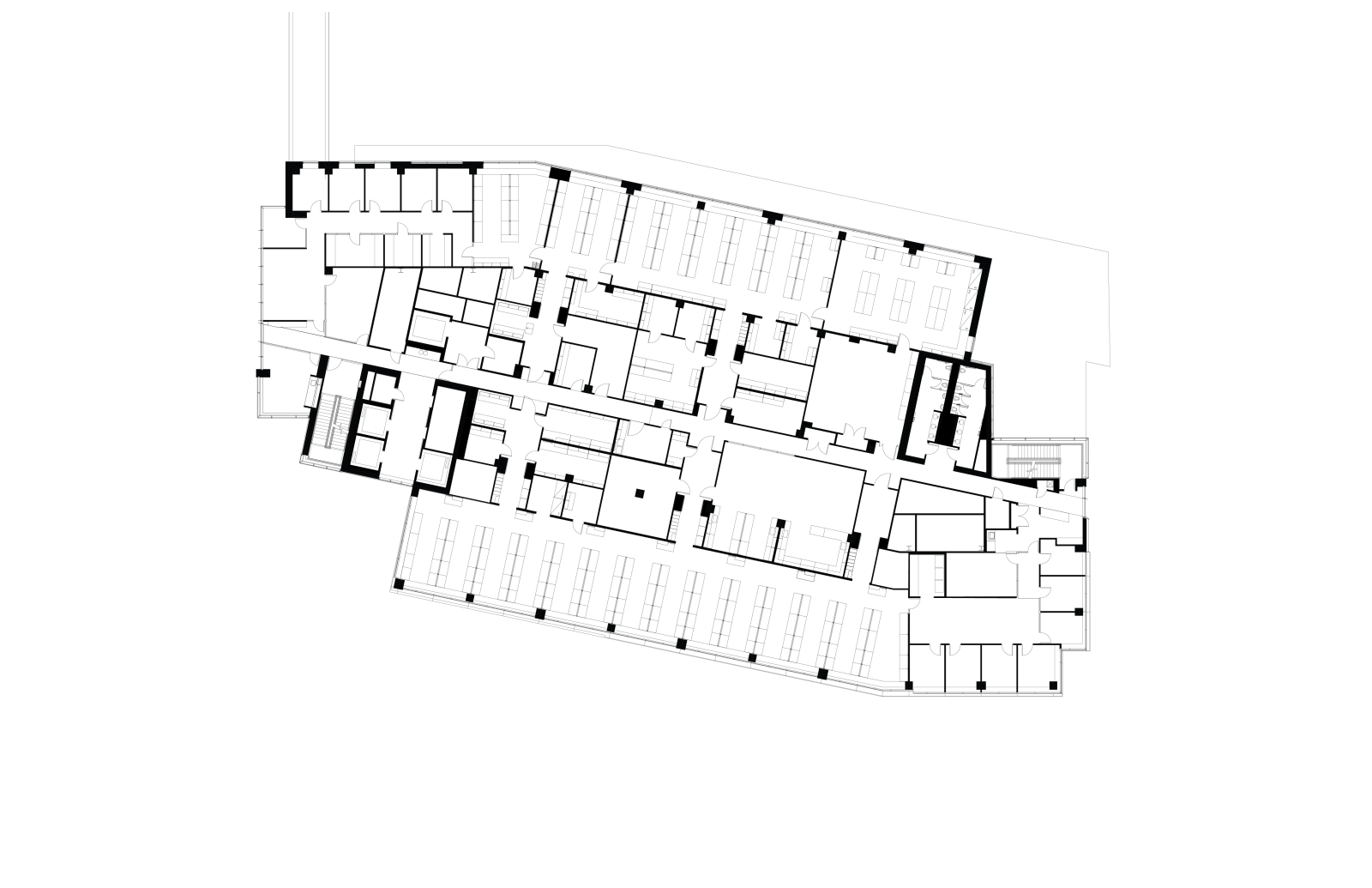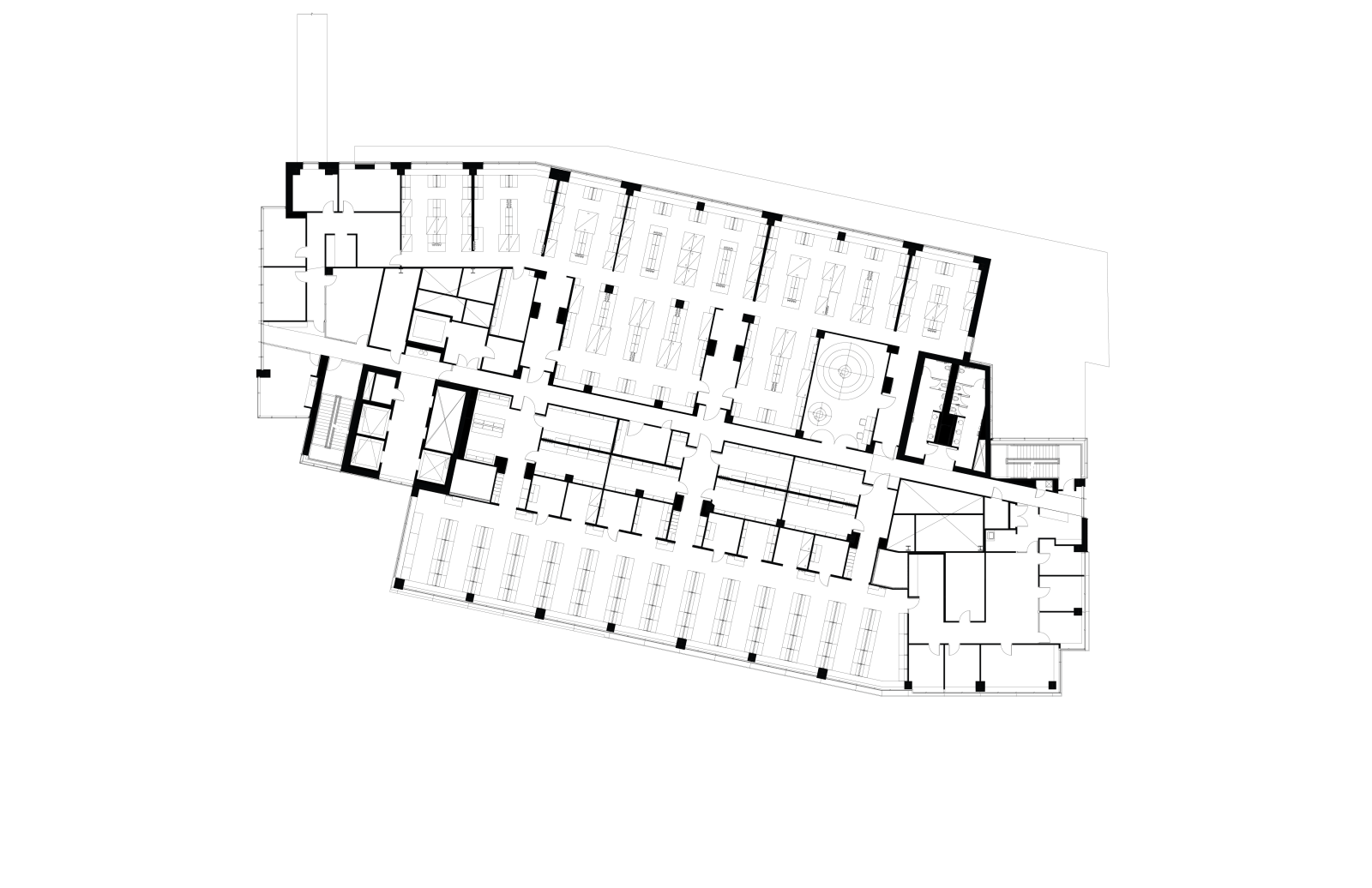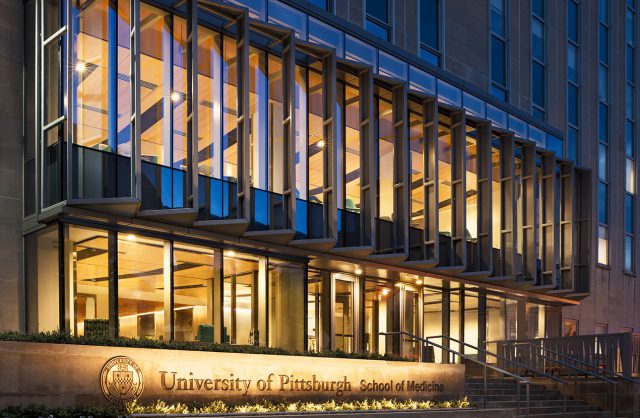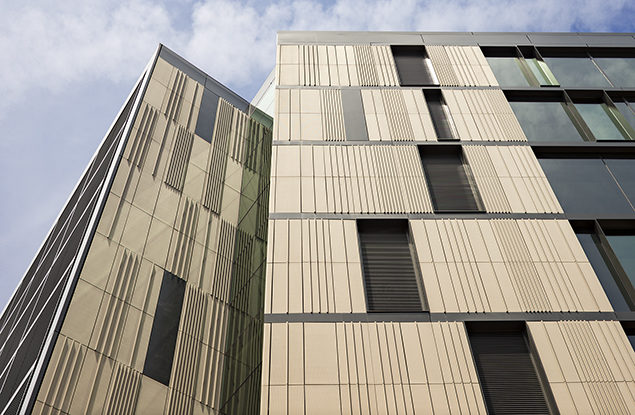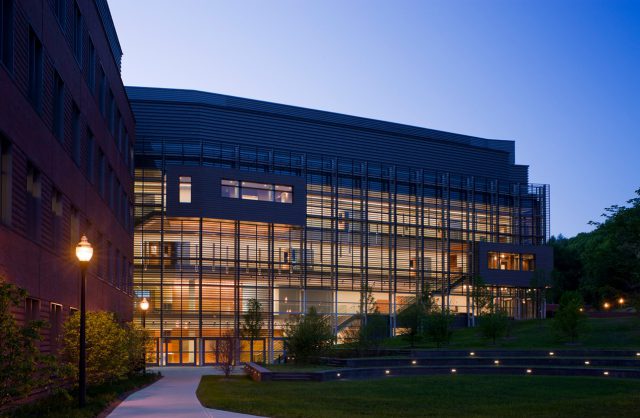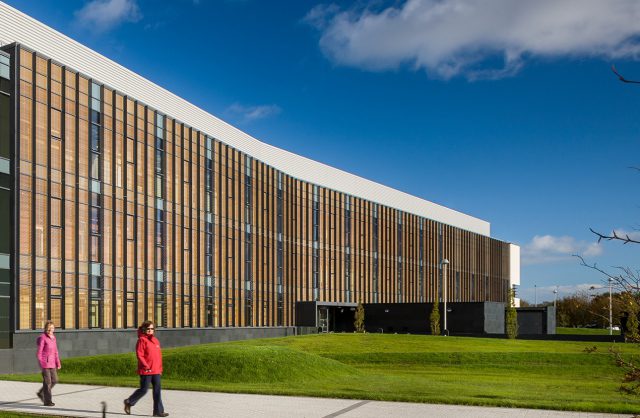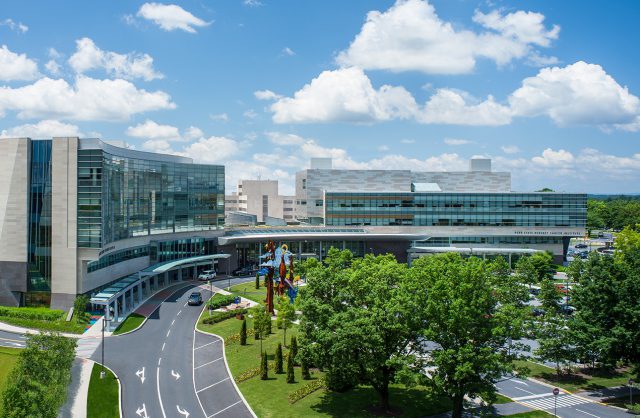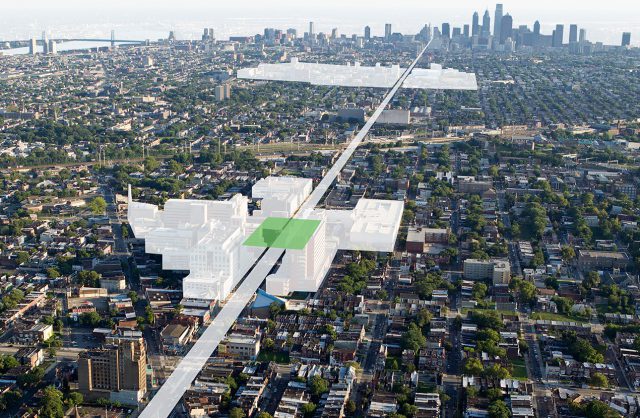This 11-story tower serves as the university research community’s new front door on Fifth Avenue, a prominent street in downtown Pittsburgh. Within the building’s “Gemini” floor plan, twin bars of modular laboratories run parallel and adjacent to each other. Circulation cores, office clusters, break areas and conference rooms occupy the building’s east and west ends. These functional zones define the building’s four exterior layers and moderate the mass of this very large facility.
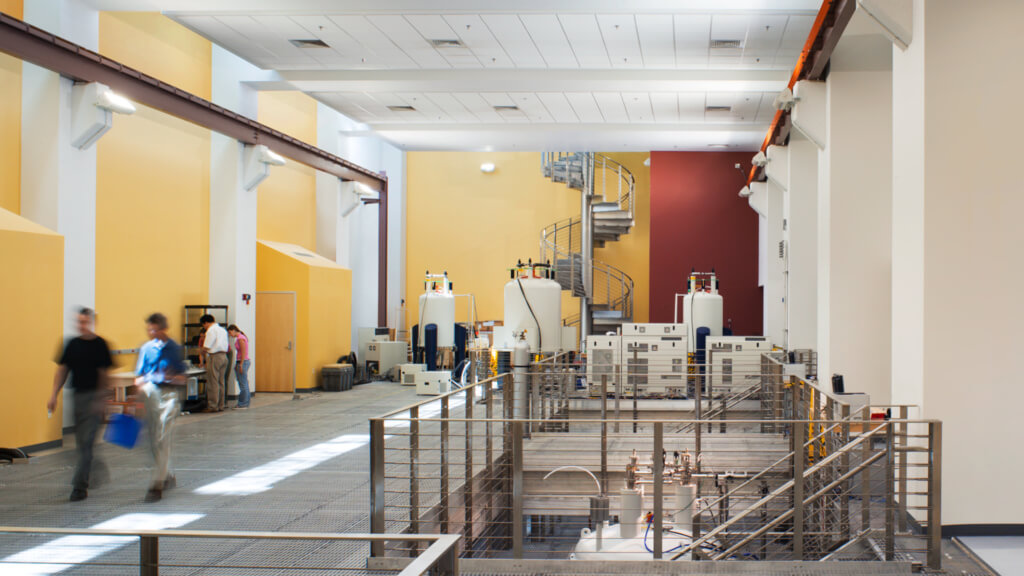
University of Pittsburgh School of Medicine
Biomedical Science Tower III
Project Statistics
LOCATION
Pittsburgh, PA / United States
COMPLETED
2005
TOTAL SQUARE FOOTAGE
330,000 GSF
PROGRAM COMPONENTS
Bioengineering, Cell Biology, Computational Biology, Developmental Biology, Drug Discovery, Human Genetics, Integrative Biology, Molecular Biology, Disease, Neuroscience, Regenerative Medicine, Structural Biology, Translational Vaccine Development, ABSL-3, Animal Facility, Drug Discovery Research, Magnet/Imaging Center, Regional Biocontainment Laboratory
AWARDS
IN THE NEWS
Team
George E. Marsh, Jr., FAIA
Principal-in-Charge
Kevin B. Sullivan, FAIA
Design Principal
BESbswyBESbswyBESbswyBESbswyBESbswyBESbswyBESbswyBESbswyBESbswyBESbswyBESbswyBESbswyBESbswyBESbswyBESbswyBESbswyBESbswyBESbswyBESbswyBESbswyBESbswyBESbswyBESbswyBESbswy
Robert Pasersky, AIA
Project Manager / Architect
Scott Parker, AIA, LEED AP
Project Manager
Montserrat Minguell
Designer
Ryan Murphy, AIA, LEED AP
Project Architect
Michael J. Quinn, AIA, CSI, CCS, LEED AP
Architect
Mary Gallagher, IIDA, LEED AP
Interior Designer
Good Ideas Rise to the Top
The vertical stacking of the building is organized around the percolation of ideas for new medications from inception to clinical trial. The fundamentals of research begin at the basement level in the Structural Biology Department. Moving upward, the Computational Biology Department models and tests ideas digitally before they become biological models in the core laboratories. Results bubble up for further study in neurobiology, bioengineering, genomics and proteomics, vaccine research and other disciplines before proceeding to the Drug Discovery Department as a last phase before entering Phase 1 Clinical Trials.
Flexibility through Resonance
Vertical circulation cores and mechanical shafts are located on the east and west ends of the building, as are clusters of offices, break areas and conference rooms to promote interaction, mirroring the Gemini form of the building. To be able to keep pace with advances in research methods, the laboratories are planned as a juxtaposition of ultra-flexible lab spaces and highly specific instrumentation laboratories.
The flexibility of the research space in this innovative building allows our faculty members to come together in multidisciplinary teams to think and work in new, more scientifically creative ways. Although the University has worked hard to eliminate administrative barriers to collaboration, the lack of physical barriers in the BST3 space exemplifies this philosophy at a more tangible level. Our scientists seem to really like it.
Arthur S. Levine, MD, Senior Vice Chancellor for the Health Sciences and Dean of the School of Medicine, University of Pittsburgh
Photography: © Warren Jagger Photography; © PAYETTE, Images by Rachellynn Schoen

